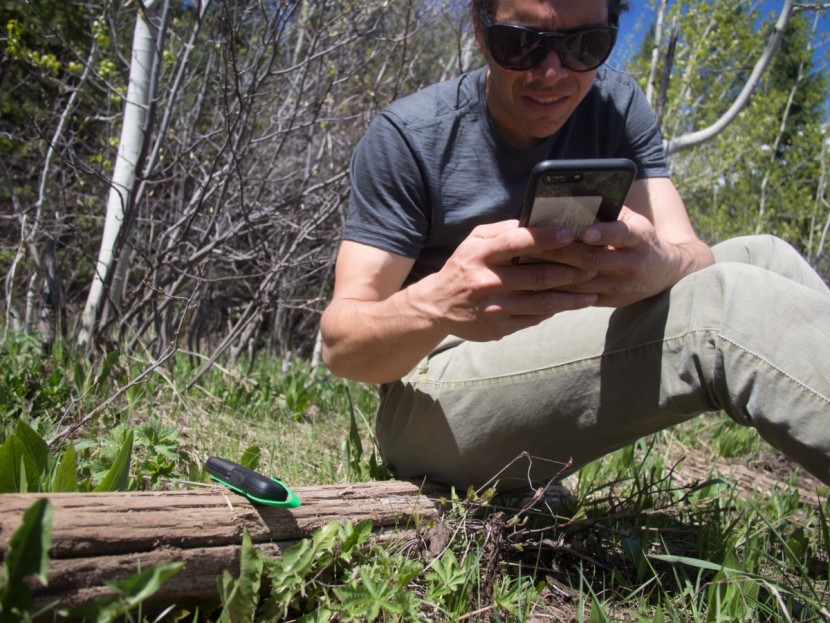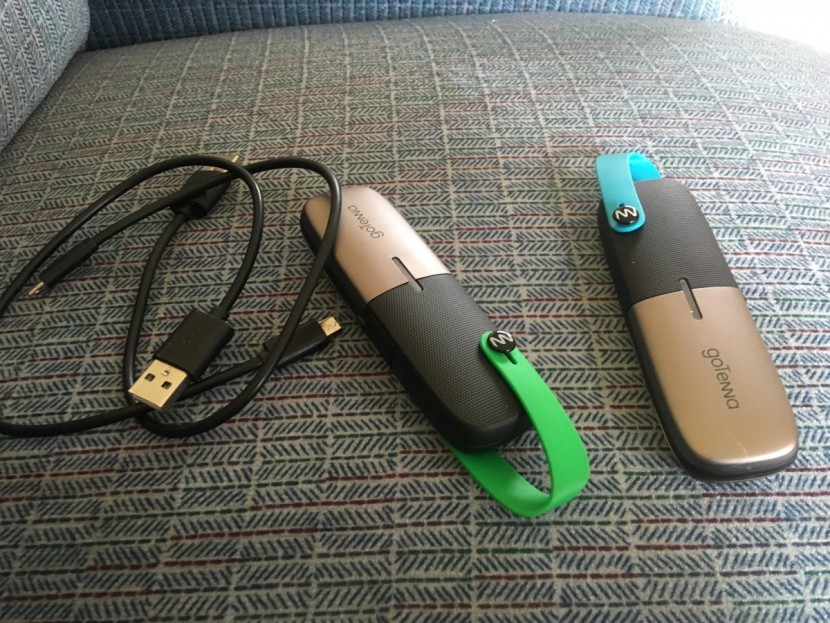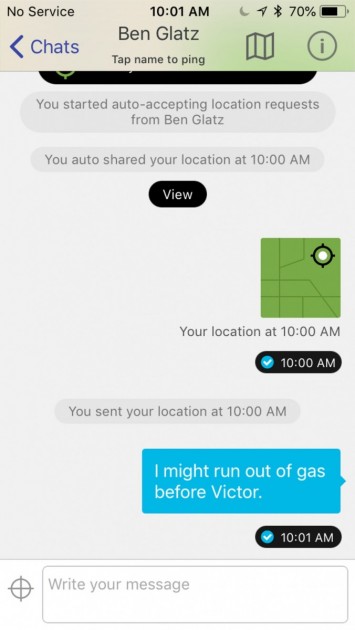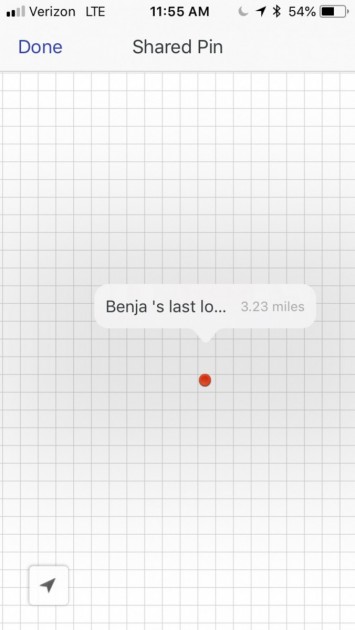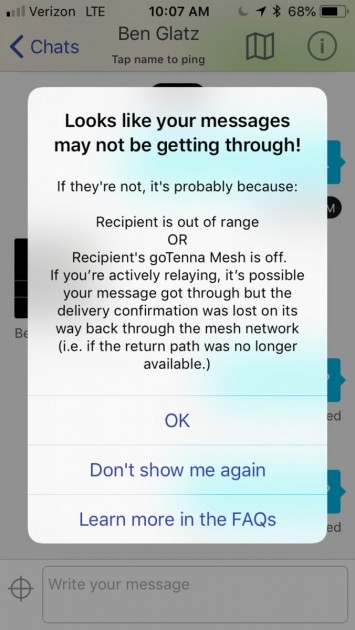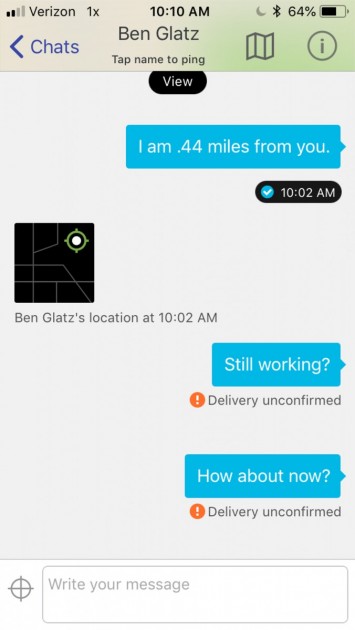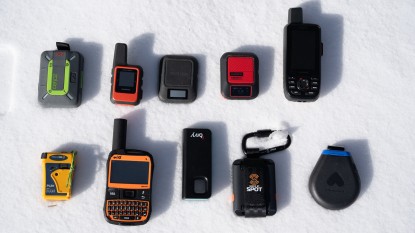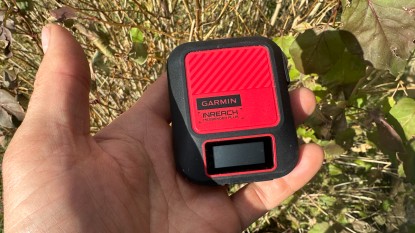GoTenna Mesh Review
Our Verdict
Our Analysis and Test Results
GoTenna Mesh is inexpensive, clever, and allows a group of dispersed users to communicate directly with one another. How does it work, exactly? Each GoTenna device is a small radio transmitter and receiver. It connects to your smartphone via a proprietary app using Bluetooth. Within the app, the user can compose and read text messages and see his or her location and the location of GoTenna equipped people nearby. A GoTenna unit can communicate with other units within range, which in turn sync with other users' smartphone apps for texting and location sharing. The range depends on terrain and number of users, but it could be as low as half a mile or up to well over 10 miles under certain circumstances. With a critical mass of users in a given area, its useful range could increase considerably.
This is a niche product that compares unfavorably in most of our scoring metrics to other products we assessed. However, it works well within its niche and is truly unique. If you understand the limitations — we demystify the perks and limitations below — this is something some wilderness travelers should consider.
SOS Emergency Messaging
There is really only one very specific instance in which the GoTenna can serve to summon outside help to a wilderness user. If the GoTenna equipped wilderness user faces a serious emergency and is within range of another GoTenna user that has signal and technology to contact help, emergency help can be secured through this intermediary. For example, you are there with a broken leg and no cell signal, but GoTenna sends your text to another user who has a cell signal or emergency satellite communications. That person can arrange help for you. Under no other circumstances does the GoTenna system allow for the acquisition of outside help.
All the other devices and services we have tested work better as emergency/SOS communicators. The ACR ResQLink+ and Best Buy OceanSignal rescueME PLB1 do this very well and do this exclusively. Both the Garmin InReach explorer and the SPOT Gen3 can be configured to send requests for varying levels of help along a continuum of emergency levels. The SPOT X, the BivyStick, and Somewear Hot Spot also offer this option. With the InReach, BivyStick, and Somewear's two-way communications, the user can provide more detailed emergency information and answer questions about their status. Be very cautious and conservative about the emergency messaging capability of the GoTenna equipment.
Non-Emergency Messaging
These devices are designed for non-emergency messaging. For communicating within a network of other GoTenna users, all or most of whom are outside of cell signal, and all of whom are within range of other GoTenna devices. This is a clever system that enables clear text messaging and sharing of respective locations.
No other device allows messaging like the GoTenna. As a ground-based, crowd-sourced network (at the current level of adoption the network of GoTenna devices you tap into is likely to be your friends and family) it can be intentionally built to suit your needs and wishes. You can drop a device in a fixed location to help extend the signal for example. A network configured to your liking can allow direct and clear text messaging and location sharing. Picture a remote hunting camp and dispersed hunters, all within the same drainage. This team, each equipped with GoTenna devices and the associated apps, can text with one another to coordinate various aspects of their hunt. The Editors Choice Garmin InReach can be used in this capacity, with a little more effort and far greater cost. None of the other devices we tested can be used like this.
Signal Coverage
This is the primary limitation of this system, as compared to the satellite-linked devices we test. It is also a complicated thing to explain. Bear with us while we break it down for you. You need to know how this technology works to determine if it will be useful to you.
The simplest way to think about using the Mesh network is between two users. Two users each carry a device and an app-enabled, properly configured smartphone. When they are within range of one another (we tested direct contact range to vary between 0.6 miles in the mountainous terrain of Wyoming's Teton Pass and 3.2 miles in the flats of Idaho's Teton Valley) these two users can text and share their locations directly. Within that same range radius, with the same terrain limitations, a larger group of users can do the same things, texting one-on-one and to group lists. Next, range can be expanded with the GoTenna's Mesh functionality. Any GoTenna device that is powered on can relay a message from you to another user. Whether that relaying device is with someone you know, a stranger, or fixed in a convenient place far from any people or smartphone, messages are automatically bumped along.
For example, picture this scenario — You are outside of cell service but texting your friend Ben through the GoTenna. In this simple configuration in flat terrain, you and Ben can reach one another up to about 3 miles apart. As soon as Ben goes beyond about 3 miles from you, you can't reach one another. Enter Sarah, with her powered-on GoTenna, who walks into your area. If she is roughly in between you and Ben, in reach of both of you, your effective range to Ben bumps up. Provided that Sarah and her device are exactly halfway between you, you and Ben could theoretically communicate 6 miles apart. Neither you, Ben or either of your phones need to know Sarah or know of Sarah for this to work.
GoTenna devices work to relay messages like this whether they are “attached” to a specific person and smartphone or if they are placed in a strategic location, unattended. Multiple relays are possible also. Of course, there are configuration steps you all need to take, and you must be mindful of battery power. However, with multiple relays possible and multiple ways to use GoTenna devices networked together, the potential range is much larger than the simple 1:1 distance.
In short, signal coverage with the GoTenna is complicated to assess or predict. Coverage depends on terrain, the size of your group, and the presence of other devices outside of your group around the landscape. With greater adoption of the GoTenna, coverage will increase. At its current level of usage, the communication value is limited to use among your friends in a relatively small geographic area.
All the other products we assessed have far greater, and far more reliable, signal coverage than the GoTenna. The ACR ResQLink+, Garmin InReach explorer+, and the OceanSignal rescueME PLB1 all have global coverage limited only by inherent, localized terrain issues associated with all satellite communications. The SPOT Gen3 uses a satellite network that doesn't cover the entire world but likely serves almost everywhere you travel.
Ease of Use
The GoTenna is complicated to use. The user interface is clean and simple like most modern electronics. However, to leverage even the most basic function from the Mesh one must understand how it all works and be constantly thinking through how to optimize the function.
When considering their intended functions, most of the other products we tested are easier to use than the GoTenna. This is partially due to the simple intent behind the other products. The GoTenna has great potential and is fairly customizable as a communication method, but it is more involved than the other options. By comparison, the ACR ResQLink and rescueME PLB1 have very simple functions and very simple usage. The InReach and SPOT devices shake out in between. The Best Buy Somewear Hot Spot is pretty slick and simple to set up.
Portability
The device is small and light. Similar to the size of a mid-sized permanent marker, the GoTenna can easily slip into a pocket. Like all electronic communication devices, reception is better outside of one's clothing or backpack and away from electronic interference. The GoTenna comes with a leash system for strapping to a backpack or the like, but this leash isn't bombproof. We had no problems with it but can envision losing it while bushwhacking or similar.
One Mesh device is a fraction of the size and weight of the next smallest product we tested. At 44g it is less than half the weight of the otherwise tied SPOT Gen3 and OceanSignal PLB1, both 114g. The Mesh device is quite a bit smaller than the Garmin InReach.
Down the road, should adoption of this technology expand, it is conceivable that Mesh networks will spring up in semi-busy, semi-remote areas. In this case, past a critical mass of adoption, it could be used for some types of emergency communications. This is not the case, currently.
Value
The devices, considering what they do, are not that expensive. However, a good communication web requires multiples. If the limitations and benefits balance out favorably for you, you will have a good idea of what this sort of communication is worth to you. With no competitor offering something the same, this is the best game in town.
Conclusion
More than most products we review, emergency and wilderness communications require an engaged consumer. With a plethora of options and a wide range of functionality, choosing the exact device, devices, or system to use is tricky. Evaluating where and how this device might fulfill your backcountry communication needs, and desires is no exception. Carefully research this product, considering our review here as a thorough starting point. Only when you fully understand the pros and cons should you “pull the trigger.” Finally, be extremely cautious about relying on the GoTenna for securing emergency assistance. This is not what it does best, and it is not the best tool for that job.



